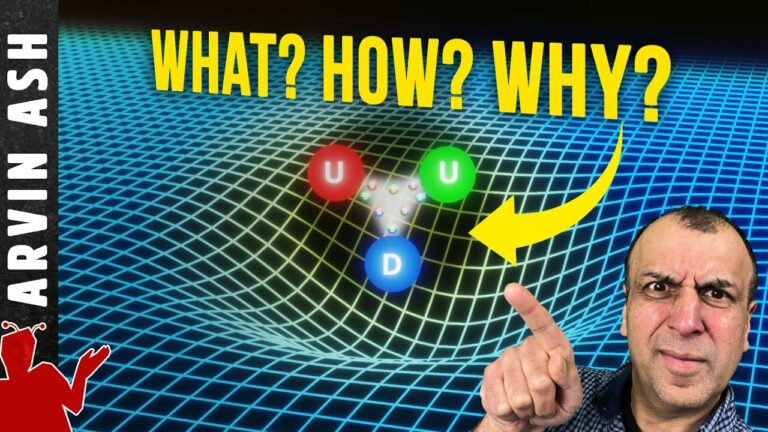How Can MASS and ENERGY be the Same Thing? What, Where and Why is it?
How is mass and energy the same thing? What is mass really? If you weigh 80kg and are in a car moving 100km/hr, your energy is equal to about 30000 joules. But did you know that the energy you have standing still, not moving at all, is more than a hundred trillion times that, over 6*10^18 joules?
This comes from E=mc^2. But what is the nature of that energy? Is it due to movement at the quantum level? It is due to forces? How is it that mass can be the same as this energy. If it’s all energy, then is mass even a real thing?
What we call mass is made up of all the atoms in the rock. 99.99% of the mass of an atom is located in its tiny nucleus in the center, which makes up less than 0.01% of its volume. The rest is in the electrons that surround the atom.
There are two sources of mass. The known mass of fundamental particles comes from their interaction with the Higgs Field. This is like an energy grid. Different particles take different amounts of energy from it. But this makes up less than 1% of the mass of an atom. The other 99% of the mass is due to the strong force which keeps quarks bound within the nucleus of an atom.
A fundamental force of nature called the strong force that keeps these quarks bound together to form the proton nucleus. This force is mediated by gluons. But gluons are massless, so how are they responsible for so much mass? Gluons bind quarks together. And both have something called the color charge. This charge is how the strong force operates.
It’s somewhat analogous to an electrical charge where negatively charged electrons surrounding positively charged protons making the atom neutral. With quarks however, we deal with red, blue and green color charges that combine to form a neutral color. These are not optical colors, but metaphorically speaking, works similarly to the way red, blue and green optical colors can combine to form a neutral or white color.
Quarks exchange colors between themselves which is mediated by gluons. And it is this exchange which results in the strong force keeping them glued together. Why does color exchange keep them bound. This is due to confinement. What this means is that a color charged particle cannot exist on its own. Quarks and Gluons are color charged particles. Why? Because color charges exist can only exist in a combination of colors that is always neutral. This need for the combination of charges to exist as neutral, attracts red, blue and green color charged particles to each other.
This is quantum chromodynamics. It’s the science of the way the strong force works to keep the quarks inside the nuclei of atoms tightly bound together. This is the strong force. But how is this strong force creating mass? Mass is really just bound energy. The rest mass of an object is its intrinsic energy-content. It’s a type of potential energy. Any form of energy contributes to the mass of a body, potential or kinetic. The nature of this energy doesn’t matter. So for example, a compressed spring is a little bit heavier than the same spring without the potential energy stored in its compression. You don’t notice this mass difference because at our scales, these energies contribute very little to the mass.
Any kind of energy bends spacetime. it creates gravity. And so bounded energy, which is what the strong force results in creates is where most of the mass comes from. 99% of the mass of objects comes from the energy of the gluons confining quarks inside the nuclei of atoms.
Another concept related to the strong force is the force that keeps Protons and neutrons glued together inside the nucleus of larger atoms. This is called strong NUCLEAR force, distinct from the Strong force which keeps quarks glued together. This is also a form of potential energy, and also contributes to the mass of an atom. This force is mediated by mesons which are formed when energy stretches quarks such that a new quark/anti-quark pair are stretched. This pair is called a meson. The exchange of mesons creates a strong attraction between protons and neutrons.
Do not forget to share your opinion with us to provide you with the best posts !




0 Comments